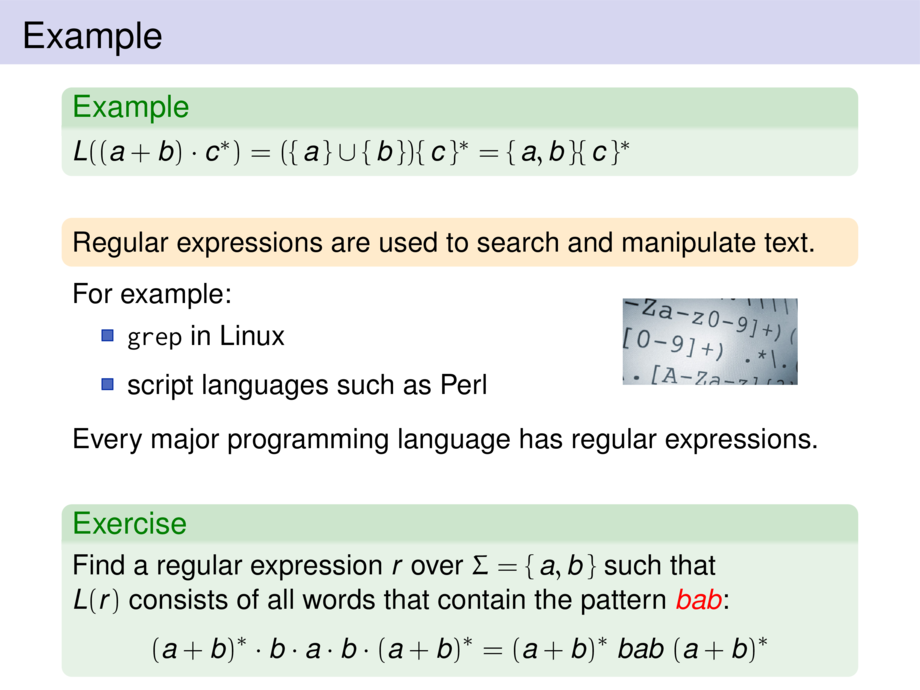



































































































8/38
\begin{frame}{Example}
\begin{example}
$L((a+b) \cdot c^*) = (\{\,a\,\} \cup \{\,b\,\}) \{\,c\,\}^* = \{\,a,b\,\} \{\,c\,\}^*$
\end{example}
\pause\bigskip
\begin{goal}{}
Regular expressions are used to search and manipulate text.
\end{goal}
\medskip
\begin{minipage}{.7\textwidth}
For example:
\begin{itemize}
\item \texttt{grep} in Linux
\item script languages such as Perl
\end{itemize}
\end{minipage}
\begin{minipage}{.29\textwidth}
\includegraphics[height=12mm]{images/regular-expressions.jpg}
\end{minipage}
\medskip
Every major programming language has regular expressions.
\pause\bigskip\medskip
\begin{exampleblock}{Exercise}
Find a regular expression $r$ over $\Sigma = \{\,a,b\,\}$ such that\\ $L(r)$
consists of all words that contain the pattern \alert{$bab$}:
\pause
\begin{talign}
(a+b)^* \cdot b\cdot a\cdot b \cdot (a+b)^* \mpause[1]{=
(a+b)^* \; bab \; (a+b)^*}
\end{talign}
\end{exampleblock}
\end{frame}

